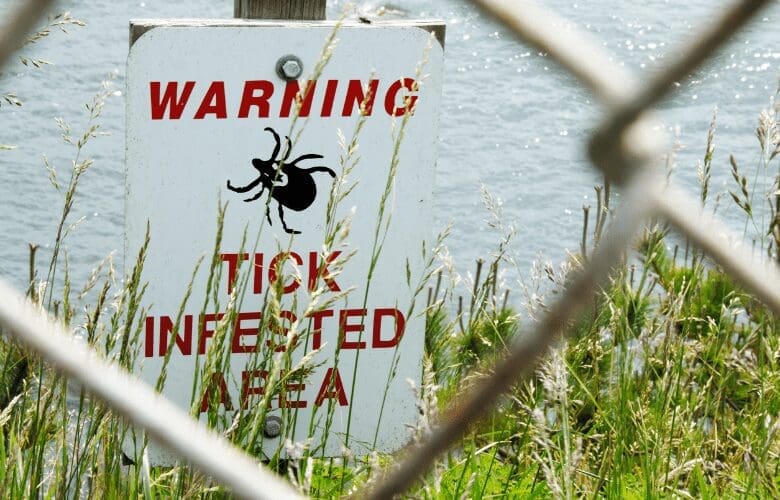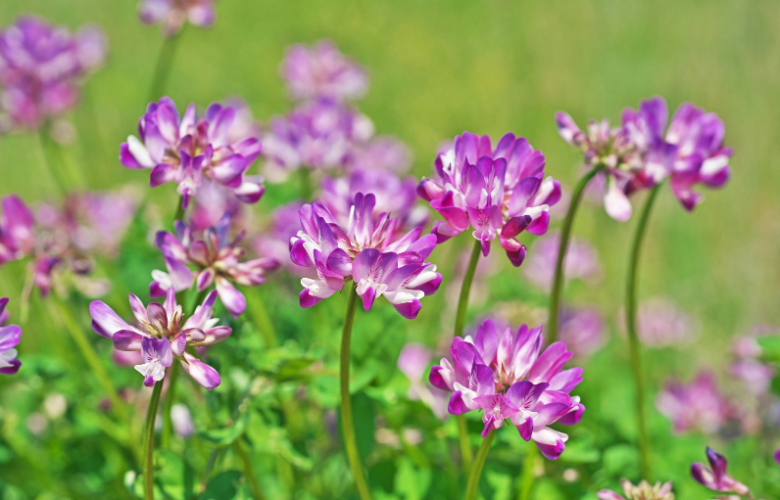How to Combat Lyme Disease Effectively with 6 Natural Therapies
Are you ready for some summer fun? The sun is shining, and the great outdoors is calling us to embark on breathtaking adventures. But hold on a second! We must watch out for those sneaky ticks, which might carry the dreaded Lyme disease. Join me as we dive into the complexities of this condition and uncover empowering natural treatment options for Lyme disease. Let’s arm ourselves, embrace the joys of summer, and prioritize our well-being. Together, we’ve got this!
WHAT CAUSES LYME DISEASE?
Lyme disease isn’t something you’ll catch from casual encounters with those regular “wood ticks” or “dog ticks.” It’s a whole different story. This condition is caused by a sneaky bacterium called Borrelia burgdorferri. The notorious black-legged tick, aka deer tick, is the real troublemaker.
When one of these infected black-legged ticks sinks its tiny fangs into your unsuspecting skin, it sets the stage for trouble. The tick acts as a devious carrier, spreading the bacterial mischief to its unwitting host.
The good news is, not all deer ticks are infected. And most people bitten by these ticks don’t usually end up with Lyme disease. The tick takes some time to transmit the bacteria – around 1 to 2 days of being attached to your skin. Plus, these clever critters thrive in humid surroundings like dense, tall grasses and wooded paths. So, be vigilant in these tick-prone areas, stay cautious, and make the most of your outdoor adventures!
TYPICAL SYMPTOMS OF LYME DISEASE
Lyme disease symptoms can differ and typically appear in stages, which can sometimes overlap. Additionally, some individuals don’t experience the typical early-stage symptoms.
Stage 1 (localized Lyme disease)
During Stage 1, the bacteria have not yet disseminated throughout the body. Typically, within a span of 3 to 30 days, symptoms may emerge, commonly encompassing:
- Rash
- Fever
- Chills
- Headache
- Fatigue
- Muscle aches
- Joint pains
- Swollen lymph nodes
Stage 2 (early disseminated Lyme disease)
In the second stage, the bacteria begin to spread throughout the body. Within 3-10 weeks after a tick bite, additional symptoms may arise, which can include those from Stage 1 as well as:
- More rashes on other body parts
- Neck pain
- Fascial weakness or paralysis on one or both sides
- Back pain
- Irregular heartbeat
- Numbness or pain in the hands and feet
- Painful swelling in eye tissues or eyelid
Stage 3 (late disseminated Lyme disease)
If left treated, Lyme can spread to different areas within the body, including the heart and nervous system, eventually advancing to Stage 3. The symptoms, which can persist for an extended duration of years, encompassing not only those experienced in the earlier stages but also involve:
- Arthritis, particularly in large joints like the knees
- Brain fog
- Shortness of breath
- Nerve damage throughout the body
- Episodes of dizziness
CAN YOU TREAT LYME DISEASE WITH ANTIBIOTICS?
Antibiotics play a crucial role in treating Lyme disease, particularly when administered promptly after infection. Early intervention with antibiotics such as doxycycline has shown positive outcomes in eliminating the bacteria responsible for the illness in many patients.
In certain instances, dormant Lyme bacteria can exist within individuals, biding their time until their immune system weakens or encounters fluctuations in autoimmunity. This can lead to symptom recurrence, as persistent bacteria remain unaffected by standard antibiotic treatment. Consequently, patients may be diagnosed with post-treatment Lyme disease syndrome (PTLDS), posing challenges for conventional medicine to attain complete resolution.
In such difficult times, embracing a holistic approach can provide a ray of hope. Natural remedies, including herbal supplements, acupuncture, and dietary modifications, have gained recognition for their potential benefits in managing PTLDS. These complementary therapies aim to support the healing process and enhance overall well-being.
6 NATURAL REMEDIES TO BEAT LYME DISEASE
The integration of natural remedies alongside conventional treatment endeavors to target the root causes of your symptoms in your battle against Lyme disease. However, it is of utmost importance to seek guidance from licensed practitioners to ensure the safe and suitable implementation of these remedies.
Here are 6 natural remedies that can be incorporated to combat Lyme disease effectively:
1. Balanced, immune-boosting diet
By prioritizing a nourishing and immune-boosting diet, you can enhance your resilience and support your body’s innate defenses to combat the infection. Moreover, a well-balanced diet is crucial in healing the gut, which is often compromised in Lyme disease cases.
Some of the most beneficial foods for naturally boosting immunity include:
- Anti-oxidant-rich foods: fresh fruits and veggies, particularly leafy greens
- Nourishing bone broth: chicken, beef, or lamb
- Probiotic-packed foods: kefir, kimchi, kombucha, and sauerkraut
- Healthy fats: extra-virgin olive oil, coconut oil, and avocado
- High-fiber foods: nuts, seeds, and legumes
- Nutrient-dense fish: tuna, anchovies, salmon, and sardines
2. Healthy lifestyle
Adopting a healthy lifestyle can profoundly bolster your body’s capacity to fight the disease. Sufficient sleep grants your body essential rest and rejuvenation, facilitating more effective healing and recovery. Moreover, engaging in regular physical activity not only fortifies cardiovascular health but also invigorates your immune system.
Simultaneously, reducing your stress levels proves instrumental in fostering your overall well-being. It prevents immune system suppression, thereby optimizing its functionality.
3. Quality supplements
To fortify your defenses against the harmful effects of Borrelia burgdorferi bacteria, along with other viruses and parasites, it’s important to prioritize the restoration of cellular health. Enhancing your regime with these vital nutrients can play a key role in achieving this goal:
- Magnesium: supports muscle function and helps alleviate symptoms such as muscle pain and cramps.
- Vitamin D: strengthens your immune system and may aid in reducing inflammation.
- Mushroom extracts: possess immune-boosting properties that can assist in fortifying your body’s natural defenses.
- B-complex: help enhance energy levels, support nerve function, and contribute to overall well-being.
- Omega-3 fatty acids: exhibit anti-inflammatory properties, potentially alleviating inflammation and joint pains.
- CoQ10: supports cellular energy production, prevents the brain from degradation and inflammation, and may assist in mitigating fatigue.
4. Herbal therapies
Herbal remedies have emerged as valuable allies in the fight against Lyme disease, harnessing their potential antimicrobial, immune-boosting, and anti-inflammatory properties. What makes these treatments particularly intriguing is their ability to delve deep into your body, penetrating your cells at a profound level.
Certain herbs that have been traditionally used to treat and alleviate symptoms include:
- Astragalus
- Japanese knotweed
- Cat’s claw
- Andrographis
- Echinacea
- Turmeric
- Ginger
- Red root
- Yellow dock
- Sweet wormwood
- Chinese skullcap
- Wild Rosemary
- Pink rock rose
- Red sage
It is important to note that while herbal remedies can be a complementary approach, consultation with a licensed practitioner is advised to ensure safe and appropriate usage.
5. Acupuncture
Acupuncture can also offer valuable support in the fight against Lyme disease. By targeting specific acupuncture points, fine needles inserted into your skin can stimulate your body’s energy flow or Qi. This ancient technique is believed to enhance your body’s resilience, fortify your immune response, and ignite the natural healing mechanisms within.
Interestingly, acupuncture can also provide relief from various Lyme-related symptoms such as pain, fatigue, and inflammation. It triggers the release of endorphins – your body’s natural pain-relievers – improving overall well-being.
Additionally, acupuncture has been observed to have a calming effect on the nervous system. This helps reduce stress and enhance sleep quality, both of which are pivotal for supporting your body’s healing process and recovery.
6. Binders
When battling Lyme, your body is under constant assault from the bacteria and its byproducts, which can overwhelm your detoxification pathways. This buildup of toxins can impede recovery and exacerbate symptoms.
To aid in the detoxification process, the use of binders can be incredibly beneficial. They act like magnets, latching onto harmful substances such as heavy metals, mold toxins, and bacterial byproducts.
Some binders used in Lyme disease treatment include:
- Activated charcoal
- Bentonite clay
- Chlorella
- Zeolite
The Bottom Line
Lyme disease presents unique challenges, especially when persistent symptoms arise even after conventional treatment. However, by integrating natural remedies and personalizing treatment plans, you can embark on a comprehensive healing journey. Exercise caution and seek the expert counsel of a trusted practitioner to curate a tailor-made arsenal that aligns with your unique needs. You deserve to regain your vitality and resilience, and with the right guidance, it is possible to achieve that goal.













